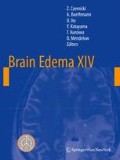Abstract
Overdrainage is a common complication observed after shunting patients with idiopathic normal-pressure hydrocephalus (iNPH), with an estimated incidence up to 25%. Gravitational units that counterbalance intracranial pressure changes were developed to overcome this problem. We will set out to investigate whether the combination of a programmable valve and a gravitational unit (proGAV, Aesculap/Miethke, Germany) is capable of reducing the incidence of overdrainage and improving patient-centered outcomes compared to a conventional programmable valve (Medos-Codman, Johnson & Johnson, Germany).
SVASONA is a pragmatic randomized controlled trial conducted at seven centers in Germany. Patients with a high probability of iNPH (based on clinical signs and symptoms, lumbar infusion and/or tap test, cranial computed tomography [CCT]) and no contraindications for surgical drainage will randomly be assigned to receive (1) a shunt assistant valve (proGAV) or (2) a conventional, programmable shunt valve (programmable Medos-Codman).
We will test the primary hypothesis that the experimental device reduces the rate of overdrainage from 25% to 10%. As secondary analyses, we will measure iNPH-specific outcomes (i.e., the Black grading scale and the NPH Recovery Rate), generic quality of life (Short Form 36), and complications and serious adverse events (SAE). One planned interim analysis for safety and efficacy will be performed halfway through the study. To detect the hypothesized difference in the incidence of overdrainage with a type I error of 5% and a type II error of 20%, correcting for multiple testing and an anticipated dropout rate of 10%, 200 patients will be enrolled.
The presented trial is currently recruiting patients, with the first results predicted to be available in late 2008.
Access this chapter
Tax calculation will be finalised at checkout
Purchases are for personal use only
References
Allin DM, Czosnyka ZH, Czosnyka M, Richards HK, Pickard JD (2006) In vitro hydrodynamic properties of the Miethke ProGAV hydrocephalus shunt. Cerebrospinal Fluid Res 3:9
Black PM, Ojemann RG, Tzouras A (1998) CSF shunts for dementia, incontinence, and gait disturbance. Clin Neurosurg 32:632–651
Boon AJ, Tans JT, Delwel EJ, Egeler-Peerdeman SM, Hanlo PW, Wurzer HA, Avezaat CJ, de Jong DA, Gooskens RH, Hermans J (1998) Dutch Normal-Pressure Hydrocephalus Study: randomized comparison of low- and medium-pressure shunts. J Neurosurg 88:490–495
Esmonde T, Cooke S (2002) Shunting for normal pressure hydrocephalus (NPH). Cochrane Database Syst Rev CD003157
Klinge P, Marmarou A, Bergsneider M, Relkin N, Black PM (2005) Outcome of shunting in idiopathic normal-pressure hydrocephalus and the value of outcome assessment in shunted patients. Neurosurgery 57:S40–S52
Kiefer M, Eymann R, Komenda Y, Steudel WI (2003) A grading system for chronic hydrocephalus. Zentralbl Neurochir 64:109–115
Meier U, Kiefer M, Neumann U, Lemcke J (2006) On the optimal opening pressure of hydrostatic valves in cases of idiopathic normal-pressure hydrocephalus: a prospective randomized study with 122 patients. Acta Neurochir Suppl 96:358–363
Meier U, Lemcke J (2006) First clinical experiences in patients with idiopathic normal-pressure hydrocephalus with the adjustable gravity valve manufactured by Aesculap (proGAV). Acta Neurochir Suppl 96:368–372
Sprung C, Miethke C, Trost HA, Lanksch WR, Stolke D (1996) The dual-switch valve. A new hydrostatic valve for the treatment of hydrocephalus. Childs Nerv Syst 12:573–581
Tokoro K, Suzuki S, Chiba Y, Tsuda M (2002) Shunt assistant valve: bench test investigations and clinical performance. Childs Nerv Syst 18:492–499
Author information
Authors and Affiliations
Corresponding author
Editor information
Editors and Affiliations
Rights and permissions
Copyright information
© 2010 Springer-Verlag/Wien
About this paper
Cite this paper
Lemcke, J. et al. (2010). Is It Possible to Minimize Overdrainage Complications with Gravitational Units in Patients with Idiopathic Normal Pressure Hydrocephalus? Protocol of the Randomized Controlled SVASONA Trial (ISRCTN51046698). In: Czernicki, Z., Baethmann, A., Ito, U., Katayama, Y., Kuroiwa, T., Mendelow, D. (eds) Brain Edema XIV. Acta Neurochirurgica Supplementum, vol 106. Springer, Vienna. https://doi.org/10.1007/978-3-211-98811-4_19
Download citation
DOI: https://doi.org/10.1007/978-3-211-98811-4_19
Published:
Publisher Name: Springer, Vienna
Print ISBN: 978-3-211-98758-2
Online ISBN: 978-3-211-98811-4
eBook Packages: MedicineMedicine (R0)

